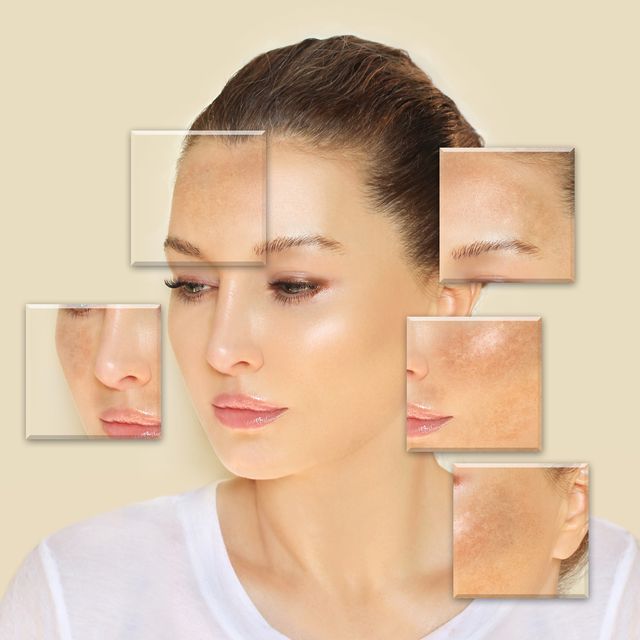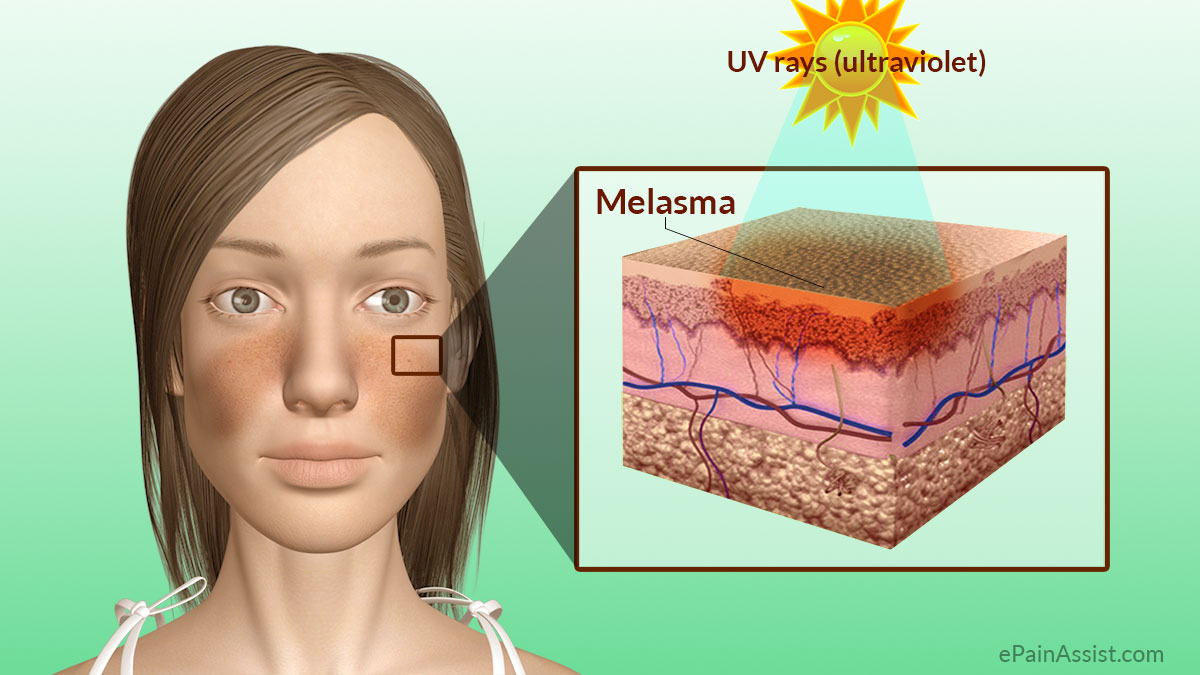Melasma: Symptoms, Causes, and Treatment Options
Melasma is a hyperpigmentation disorder characterized by dark brown or black patches or spots caused by an overproduction of melanin. It commonly affects women between the ages of 20 and 50, especially during pregnancy and after childbirth, and may become lighter or darker depending on the season. While the exact cause of melasma is not clearly understood, common triggers include sun exposure, pregnancy, and the use of birth control pills.
Overview of Melasma
Melasma is a skin condition caused by hyperpigmentation, occurring when melanin is overproduced, leading to dark spots or patches on the skin. These typically appear on the face—especially the forehead, cheeks, nose bridge, and around the lips. While melasma doesn’t pose a serious health risk, it is a major concern for many women because it affects their appearance and often leads to a loss of confidence and emotional discomfort.

Melasma Symptoms
Signs and symptoms of melasma:
Melasma primarily develops on the face, often in one or more of the following areas:
-
Cheeks
-
Chin
-
Forehead
-
Nose
-
Upper lip
In some cases, melasma may also appear along the jawline, neck, arms, or other areas.
Wherever it appears, melasma causes blotchy patches or speckled spots that can resemble freckles. The color varies depending on each person's skin tone and the severity of the condition, but it is usually slightly darker than your natural skin tone. Most people see various shades of brown, while those with darker skin may notice grayish-blue patches.
Melasma is not painful or itchy. Even though this condition may be visible, you won’t feel anything physically. It does not cause pain or itching.
How melasma affects emotional well-being:
While your skin may not feel different, melasma can have an emotional impact. It can lead to self-consciousness and reduced confidence. Studies show that melasma may lower self-esteem because of its effect on physical appearance.
What Causes Melasma?
Researchers have discovered that in people with melasma, the pigment-producing cells in the skin (melanocytes) tend to be more active than normal. However, the exact reason why this happens is still not fully understood.
Melasma may develop when something triggers these melanocytes to become overactive.
Sun exposure: When sunlight hits our skin, it stimulates the body to produce more melanin. This may explain why melasma commonly appears on sun-exposed areas such as the face, neck, and arms.
Pregnancy: The increased levels of estrogen and progesterone during pregnancy are believed to be a significant cause of melasma.
Certain medications: Some medications can trigger melasma in certain individuals, including:
-
Anti-seizure medications
-
Birth control pills (oral contraceptives)
-
Drugs that make your skin more sensitive to sunlight (including retinoids, certain antibiotics, and some blood pressure medications)
Stress: Although still debated, some research suggests that stress may contribute to melasma. Stress increases cortisol levels in the body, and higher cortisol may play a role in melasma development.
Tanning beds: Tanning beds or sunlamps often emit UV rays that are even stronger than natural sunlight. UV exposure stimulates melanin production, and sometimes this pigment is produced unevenly, leading to the blotchy patches and freckle-like spots seen in melasma.
Thyroid disorders: The thyroid is a gland in the neck that produces hormones essential for various body functions, such as metabolism and heart rate regulation. Thyroid dysfunction may increase the risk of developing melasma. In some cases, treating the thyroid condition can help improve or even clear melasma.

Risk Factors for Melasma
Who is at risk of developing melasma?
-
Women Aged 20 to 40
Melasma is more common in women than men, especially for those between the ages of 20 and 40. Hormonal changes during this period are one of the main causes of melasma formation. Factors such as pregnancy, the use of birth control pills, or hormonal fluctuations during menstruation can increase the risk of developing melasma. -
Medium to Dark Skin Tone
Skin tone is also an important factor when it comes to the risk of melasma. People with medium to dark skin tones, such as Latina, Asian, Black, or Native American women, are at a higher risk for melasma compared to those with lighter skin tones. This is because their skin generally produces more melanin, making it more prone to melasma when exposed to triggers. -
Family History of Melasma
Genetics play a significant role in the development of melasma. Numerous studies have shown that individuals with a family history of melasma are at a higher risk of developing it. A study on 324 global melasma patients revealed that about 48% of them had relatives with melasma, proving that genetic factors directly impact the likelihood of developing this condition. -
Exposure to Sunlight and Hot Weather
Sun exposure is one of the main risk factors for melasma. UV rays from the sun stimulate the production of melanin, leading to hyperpigmentation on the skin. When the skin is damaged by UV rays, it responds by producing melanin to protect itself from harmful UV radiation. However, if this process is uncontrolled, it can lead to melasma formation.
Prolonged Sun Exposure:
If you spend a lot of time outdoors without protecting your skin, UV rays directly affect the skin, increasing the risk of melasma. Even people with darker skin can develop melasma if they do not protect their skin properly. Using sunscreen with an appropriate SPF is a simple and effective way to prevent sun-induced melasma.
Effects of Hot Weather:
Hot weather not only intensifies UV radiation but also makes the skin more prone to dryness and irritation. When the skin becomes dry, dead skin cells accumulate, creating conditions for melasma to form. Particularly in the summer, when temperatures are high and sunlight is intense, the risk of melasma increases. Therefore, it is important to not only avoid direct sun exposure but also keep the skin hydrated to prevent dryness and protect it from harmful factors.
What are the treatment methods for melasma and which treatment should you use for effective results?
Melasma is a common issue faced by many, especially women of reproductive age and those with medium to dark skin tones. Although melasma does not pose a threat to health, it can significantly affect the aesthetics and self-confidence of those who have it. Proper diagnosis and treatment of melasma can help you manage the condition and restore healthy, even-toned skin.

Melasma Treatment Solution from LADEEN Cosmetic
After thorough research and evaluation of melasma treatment solutions, LADEEN Cosmetic has become the top choice for both experts and consumers. Committed to providing effective, safe products suitable for all skin types, LADEEN Cosmetic offers a superior solution for treating melasma, particularly the LADEEN MELASMA Serum.
The LADEEN MELASMA Serum is one of the standout products designed to fade melasma, freckles, and brown spots on the skin. With a formula containing natural ingredients and targeted active compounds, this serum penetrates deeply into the skin, helping to brighten and even out skin tone in a short period. Not only is it effective in reducing dark spots, but it also nourishes and revitalizes the skin, leaving it smooth and healthy.
Numerous studies and positive reviews from users show that the LADEEN MELASMA Serum significantly improves melasma after just a short period, delivering bright, healthy, and even skin without causing irritation. This serum is highly recommended by dermatologists, especially for those seeking a safe and effective solution for treating melasma.
Conclusion
Treating melasma requires patience and the right approach. With the LADEEN MELASMA Serum, LADEEN Cosmetic has proven its outstanding effectiveness in fading melasma and restoring skin health. Recommended by dermatologists, this product will help you quickly regain radiant, even-toned skin and boost your confidence in daily life.

Many people worry about melasma returning after successful treatment with LADEEN Cosmetic. But don’t worry—LADEEN MELASMA Serum doesn’t just fade surface spots; it targets the root cause of melasma by deeply eliminating hidden melanin pigments from the dermis and subcutaneous layers of the skin. Thanks to its advanced formula, this serum helps prevent recurrence, restores skin from within, and delivers long-lasting, safe results.
So after completing your treatment, there's no need for a complicated skincare routine. Just a few simple, proper skincare steps can help you maintain radiant, even-toned skin and keep melasma from coming back.
Simple yet effective post-treatment skincare steps:
🔹 Gentle cleansing twice daily
Use a mild, alcohol-free, fragrance-free cleanser morning and night to remove dirt and excess oil, keeping pores clear and allowing your skin to breathe and regenerate naturally.
🔹 Always apply sunscreen in the morning
This is a must, especially for skin that has previously suffered from melasma. Use a sunscreen with SPF 30–50 that protects against both UVA and UVB rays. Reapply every 2–3 hours when exposed to sunlight, and try to avoid harsh midday sun.
🔹 Healthy lifestyle habits
Get enough sleep, drink plenty of water, and eat a diet rich in vegetables and fruits containing vitamins C, E, and A. These habits help strengthen your skin from the inside and reduce stress—one of the common triggers for melasma recurrence.
LADEEN MELASMA Serum is not just a treatment—it’s a long-term beauty partner for women’s skin. Thousands of customers have trusted and affirmed:
“Since I started using LADEEN, I’m no longer afraid of melasma coming back.”
So go ahead—enjoy your renewed skin: bright, even-toned, firm, and flawless—with just a few gentle daily steps.






